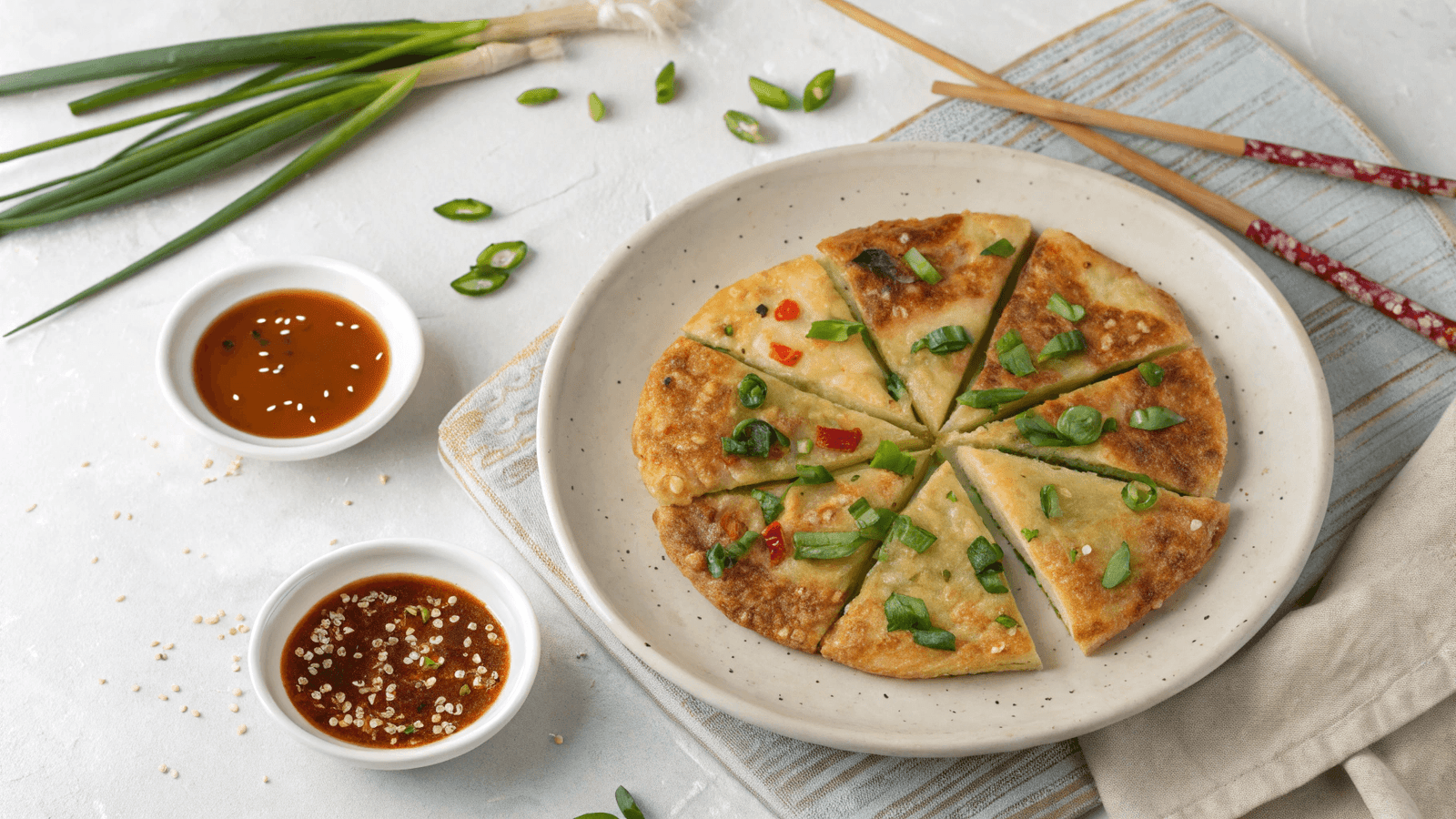7 Secrets to Making the Best Korean Seafood Pancake at Home
Korean seafood pancake secrets revealed! Crispy edges & flavorful fillings, guaranteed. This guide offers step-by-step tips for perfect Haemul Pajeon.
Table of Contents
Have you ever dreamed of recreating those irresistibly crispy and savory Korean seafood pancakes you enjoy at your favorite restaurant? The “Haemul Pajeon“, with its tantalizing aroma and delightful crunch, is a culinary delight. However, many home cooks struggle with achieving the perfect texture and flavor. The result often ends up being soggy, bland, and falling apart. Thankfully, these problems are all avoidable. With these 7 secrets, you’ll be able to confidently create restaurant-quality Korean seafood pancakes in your own kitchen, guaranteed to impress your family and friends! This is your ultimate guide to mastering the art of “Haemul Pajeon”.
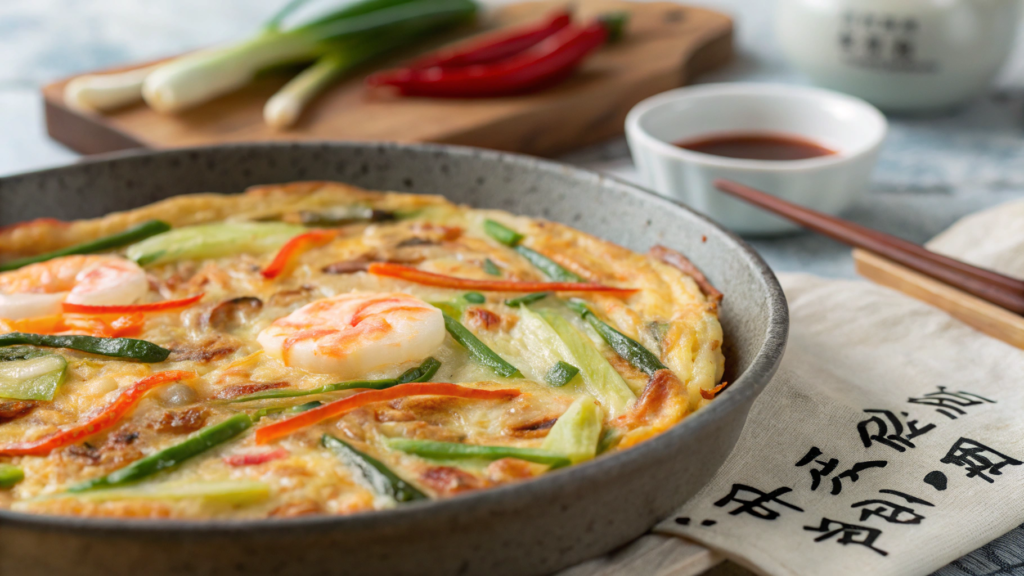
Secret #1: The Perfect Pancake Batter – Foundation for Success
The batter is, in effect, the cornerstone of a great Korean seafood pancake. Therefore, selecting the right ingredients and achieving the perfect consistency are critical for a crispy and flavorful result.
2.1 Flour Power: Choosing The Right Flour Blend
The type of flour you use greatly affects the final texture of your pancake. While all-purpose flour can work, a special Korean pancake mix, or “buchim garu,” is often the best choice. This mix usually contains a blend of wheat flour, rice flour, and seasonings, therefore ensuring a crispier texture and a more authentic flavor. You can find “buchim garu” at most Asian grocery stores or online.
However, if you’re using all-purpose flour, you need to add a bit of potato starch or rice flour. This is because it helps to create that characteristic crispness. A good ratio is about 3 parts all-purpose flour to 1 part potato starch or rice flour. This blend will give your pancake a lighter and more delicate texture, which is important for a delicious final result.
2.2 Liquid Gold: Choosing Between Water And Broth
The liquid you use in your batter is equally important, in addition. While water is a perfectly acceptable option, using broth will significantly enhance the flavor. Anchovy broth, vegetable broth, or even a light chicken broth adds umami and depth. The broth infuses the batter with a savory richness that water simply can’t provide.
For a quick and easy anchovy broth, simmer dried anchovies and kelp in water for about 20 minutes. Then strain the broth and let it cool before adding it to your batter. This simple step will elevate the taste of your pancake to another level. In contrast, if you are a vegetarian, vegetable broth is your option.
2.3 Achieving the Right Consistency – The Secret to a Great Seafood Pancake
The right batter consistency is crucial. Therefore, you want a batter that’s not too thick and not too thin. It should be thin enough to spread easily in the pan but thick enough to hold the seafood and vegetables together. Think of it like a thin cream. If the batter is too thick, your pancake will be dense and heavy. In contrast, if it’s too thin, it will be flimsy and fall apart.
To adjust the consistency, add a little more liquid if it’s too thick, or a bit more flour if it’s too thin. The exact amount will depend on the humidity and the type of flour you’re using. Always add liquid or flour gradually, mixing well after each addition, until you achieve the desired consistency.
2.4 Letting It Rest: Why it Matters for a Great Seafood Pancake
Resting the batter for at least 30 minutes is an essential step that many people skip. However, this resting period allows the gluten in the flour to relax. It results in a more tender and less chewy pancake. During this time, the flour also absorbs the liquid, leading to a better overall texture. So, be patient and let your batter rest. It will make a world of difference.
Secret #2: Seafood Selection & Preparation – Freshness is Key
The quality of your seafood directly affects the taste of your pancake. Therefore, choosing fresh, high-quality ingredients is essential for a truly delicious result.
3.1 Choosing the Right Seafood: Which Seafood to Use in Seafood Pancake
Some of the best seafood options for Korean seafood pancakes include shrimp, squid, mussels, clams, and oysters. Each type of seafood brings a unique flavor and texture to the dish. Shrimp adds a sweetness, squid provides a slightly chewy texture, and mussels and clams offer a briny flavor.
You can use frozen seafood if fresh isn’t available. However, make sure to thaw it completely and drain any excess water. Excess water will result in a soggy pancake. Patting the seafood dry with paper towels before adding it to the batter is a good practice.
3.2 Cleaning and Preparing the Seafood the Right Way
Properly cleaning and preparing the seafood is crucial. Therefore, take the time to clean each type of seafood carefully. Devein the shrimp, clean the squid, and scrub the mussels and clams. Cut the seafood into bite-sized pieces to ensure even cooking.
You can also marinate the seafood briefly in a simple marinade of soy sauce, garlic, and ginger for added flavor. However, this step is optional, but it can enhance the overall taste of the pancake.
3.3 Vegan/Vegetarian Options for a Great Pancake
For vegan and vegetarian versions, consider using mushrooms (king oyster, shiitake), zucchini, bell peppers, and firm tofu. These ingredients provide a similar texture and flavor profile to seafood. Mushrooms, for instance, can offer a meaty texture and umami flavor.
Remember to use a vegetable broth instead of anchovy broth for the batter. You may need to pre-cook certain vegetables, such as zucchini or bell peppers, to ensure they’re tender when the pancake is cooked.
Secret #3: The Green Onion Game – More Than Just a Garnish
Green onions are not just a garnish in Korean seafood pancakes. They are a key ingredient that contributes to the flavor and structure of the dish. Therefore, using them correctly is essential.
4.1 Choosing the Right Green Onions (Scallions)
Choose fresh, firm green onions (scallions) for the best flavor and texture. The white part of the green onion has a stronger flavor, while the green part is milder. Using a combination of both will add complexity to your pancake. Therefore, selecting the best possible ingredients will greatly improve your cooking.
4.2 Cutting and Preparing the Green Onions the Right Way
Cut the green onions into long strands. This will provide structural integrity to the pancake and make it easier to flip. Separating the layers of the green onions ensures they cook evenly and don’t clump together.
4.3 Integrating Green Onions into the Batter for the Best Flavor
The green onions should be incorporated into the batter and not just scattered on top. This ensures they are evenly distributed throughout the pancake and contribute to the overall flavor. Mix the green onions into the batter just before cooking to prevent them from becoming soggy. Therefore, it is extremely important to have a good execution when cooking.
Secret #4: The Cooking Process – Mastering the Heat and Oil
Mastering the cooking process is essential for achieving that perfectly crispy and golden-brown Korean seafood pancake. Therefore, paying attention to the heat and oil is crucial.
5.1 Choosing the Right Pan is Essential
The right pan can make all the difference. A cast iron skillet or a non-stick skillet works best. These pans distribute heat evenly and prevent the pancake from sticking. The size of the pan should be large enough to accommodate the batter without overcrowding it. Therefore, always use a large pan, not a small one.
5.2 Temperature Control: It’s All About The Heat
Maintaining the correct temperature is crucial. Therefore, use medium-high heat to achieve a crispy crust without burning the pancake. Test if the pan is hot enough by flicking a few drops of water into it. If the water sizzles and evaporates quickly, the pan is ready. Cooking at too low a temperature will result in a soggy pancake, while cooking at too high a temperature will burn the outside before the inside is cooked.
5.3 The Art of Oiling: Not Too Much, Not Too Little
Using enough oil is essential for a crispy texture. However, too much oil can make the pancake greasy. Vegetable oil, canola oil, or peanut oil are all good choices. Ensure the oil is evenly distributed in the pan before adding the batter.
5.4 The Pouring and Spreading Technique
Pour the batter into the hot, oiled pan. Then, evenly spread the batter and distribute the seafood and vegetables. Add a “top coat” of batter to ensure everything is held together. This technique helps to create a cohesive and evenly cooked pancake.
5.5 Flipping Like a Pro
Flipping the pancake without breaking it can be tricky. Use a large spatula or two spatulas for support. Slide the spatula(s) under the pancake and flip it quickly and confidently. Don’t be afraid to practice. Even if the first few attempts aren’t perfect, you’ll get the hang of it with practice.
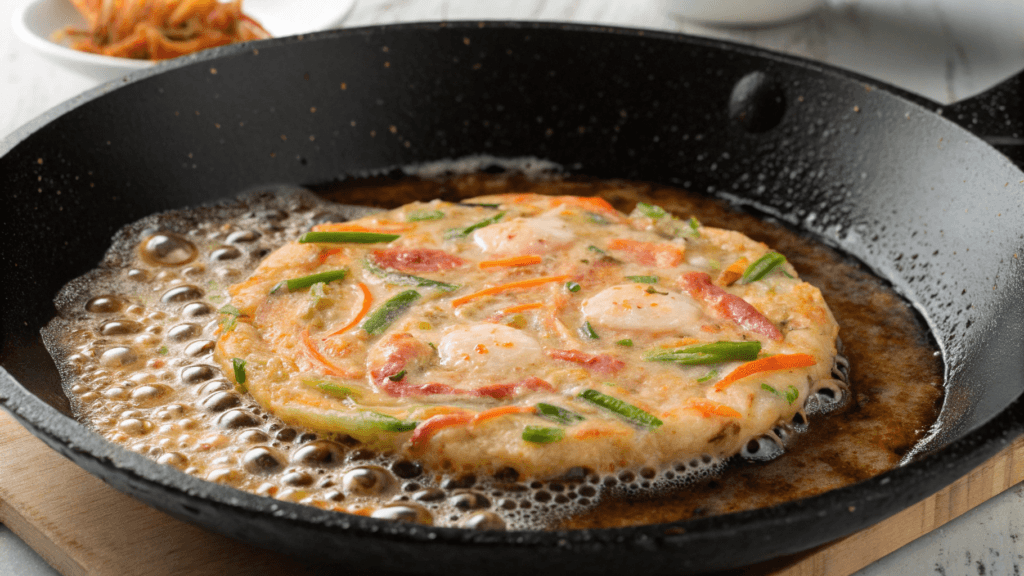
Secret #5: Achieving the Ultimate Crisp – Patience and Persistence
Achieving the ultimate crisp requires patience and persistence. Therefore, don’t rush the cooking process.
6.1 Pressing Down for Crispiness
Gently pressing down on the pancake with a spatula helps to achieve a crispy crust. This ensures even contact with the hot pan. Press down every few minutes, using a moderate amount of pressure.
6.2 Monitoring the Color
The ideal color of the pancake is golden brown and crispy. Monitor the color closely to prevent burning. The edges should be nicely browned, and the center should be cooked through.
6.3 The Sound of Success: Pay Attention
The sound of the sizzling oil can indicate when the pancake is ready. Listen for a consistent sizzle, which indicates that the pancake is cooking evenly. If the sizzling slows down, it may be time to add more oil or adjust the heat. Therefore, be patient and monitor the sound.
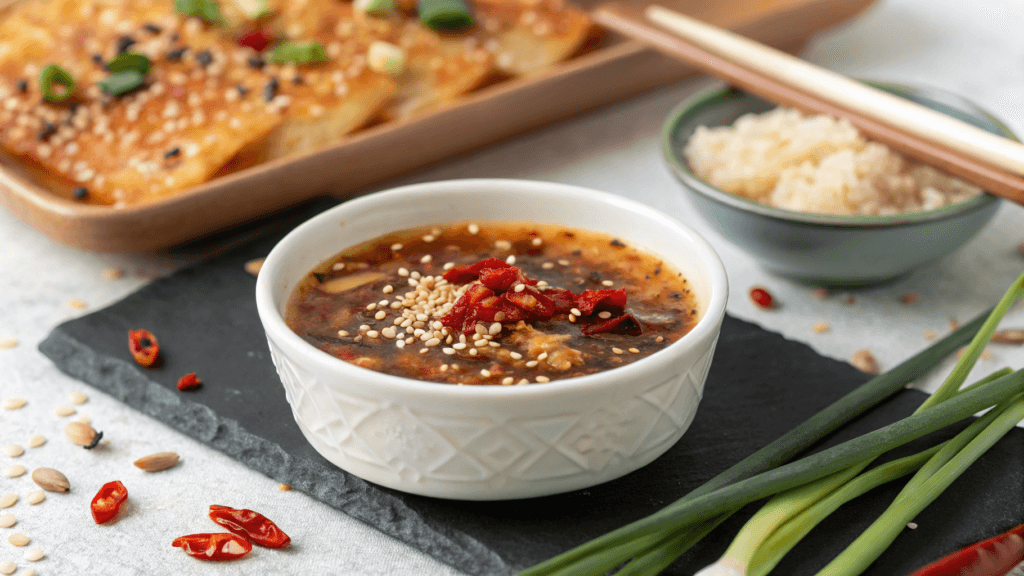
Secret #6: The Dipping Sauce – The Perfect Complement
A delicious dipping sauce is the perfect complement to Korean seafood pancake. Therefore, it is essential for completing the dish.
7.1 Classic Dipping Sauce Recipe
Here’s a recipe for a classic soy sauce-based dipping sauce:
- 2 tablespoons soy sauce
- 1 tablespoon rice vinegar
- 1 teaspoon sesame oil
- 1/2 teaspoon gochugaru (Korean chili flakes)
- 1 tablespoon chopped green onions
Mix all the ingredients together in a small bowl. You can also add a pinch of sugar, garlic, or sesame seeds for variations. This sauce provides a balance of salty, tangy, and spicy flavors that enhance the taste of the pancake.
7.2 Exploring Alternative Sauces: Mix And Match
Consider spicy gochujang-based sauce, wasabi mayo, or sweet chili sauce for alternative dipping sauces. Each sauce pairs well with different types of seafood. Experiment with different sauces to find your favorite combination.
7.3 Presentation Matters: Serving It Up Right
Serve the dipping sauce in small bowls with chopsticks or small spoons. Garnish the dipping sauce with sesame seeds or chopped green onions. Presentation adds to the overall dining experience. Therefore, do not be afraid to invest a bit more time on this part.
Secret #7: Serving and Storing – Enjoying the Fruits of Your Labor
Serving and storing the Korean seafood pancake properly ensures that you enjoy the fruits of your labor to the fullest. Therefore, keep this in mind.
8.1 Slicing and Presentation
Slice the pancake into wedges or squares and arrange them on a serving platter. Garnish with chopped green onions, sesame seeds, or a sprinkle of gochugaru. A visually appealing presentation makes the dish even more inviting.
8.2 Serving Suggestions
Serve the pancake hot and fresh. Pair it with Korean side dishes (banchan) like kimchi, pickled vegetables, or bean sprout salad. These sides complement the flavors of the pancake and create a balanced meal.
8.3 Storing Leftovers
Store leftover pancake in an airtight container in the refrigerator. Reheat it in a skillet or oven to restore its crispiness. While it’s best enjoyed fresh, leftovers can still be delicious the next day.
IX. Troubleshooting – Common Mistakes and How to Avoid Them
Several common problems can arise when making Korean seafood pancakes at home. Therefore, addressing them can help you achieve perfect results:
- Soggy Pancake: Ensure the pan is hot enough and use enough oil. Press down on the pancake while cooking to promote crispiness.
- Pancake Falling Apart: Use the correct batter consistency and add enough green onions for structural integrity. Flip the pancake carefully using a large spatula or two.
- Bland Flavor: Use broth instead of water in the batter and marinate the seafood for added flavor.
- Burnt Pancake: Maintain the correct temperature (medium-high heat) and monitor the color closely to prevent burning.
Therefore, avoid these problems with all the tips and tricks provided in this article.
Recipe: Korean Seafood Pancake (Haemul Pajeon)
Yields: 2 servings
Prep time: 20 minutes
Cook time: 20 minutes
Ingredients:
- 1 cup Korean pancake mix (buchim garu) or ¾ cup all-purpose flour + ¼ cup potato starch
- 1 cup cold water or anchovy broth
- 1/2 cup mixed seafood (shrimp, squid, mussels, clams), cleaned and chopped
- 1 cup green onions, cut into long strands
- 1/4 cup carrots, julienned
- 1/4 cup onion, thinly sliced
- 2 large eggs (optional, for richer flavor)
- Vegetable oil, for cooking
Dipping Sauce:
- 2 tablespoons soy sauce
- 1 tablespoon rice vinegar
- 1 teaspoon sesame oil
- 1/2 teaspoon gochugaru (Korean chili flakes)
- 1 tablespoon chopped green onions
Instructions:
- Prepare the Batter: In a large bowl, mix the Korean pancake mix (or all-purpose flour and potato starch) with cold water or anchovy broth. Mix until smooth.
- Rest the Batter: Let the batter rest for at least 30 minutes.
- Prepare the Seafood and Vegetables: Clean and chop the seafood into bite-sized pieces. Cut the green onions into long strands. Julienne the carrots and thinly slice the onion.
- Mix Ingredients: In a separate bowl, combine the seafood, green onions, carrots, and onion.
- Combine Batter and Filling: Add the seafood and vegetable mixture to the batter and mix well. If using, whisk in the eggs.
- Heat the Pan: Heat a large skillet (cast iron or non-stick) over medium-high heat. Add enough vegetable oil to coat the bottom of the pan.
- Pour the Batter: Pour half of the batter into the hot pan and spread it evenly.
- Cook the Pancake: Cook for 5-7 minutes, or until the bottom is golden brown and crispy. Gently press down on the pancake with a spatula to ensure even cooking.
- Flip the Pancake: Flip the pancake carefully using a large spatula or two. Cook for another 5-7 minutes, or until the other side is golden brown and crispy.
- Prepare the Dipping Sauce: While the pancake is cooking, mix together the soy sauce, rice vinegar, sesame oil, gochugaru, and chopped green onions in a small bowl.
- Serve: Slide the pancake onto a cutting board and slice into wedges. Serve hot with the dipping sauce.
- Repeat: Repeat steps 7-11 with the remaining batter.
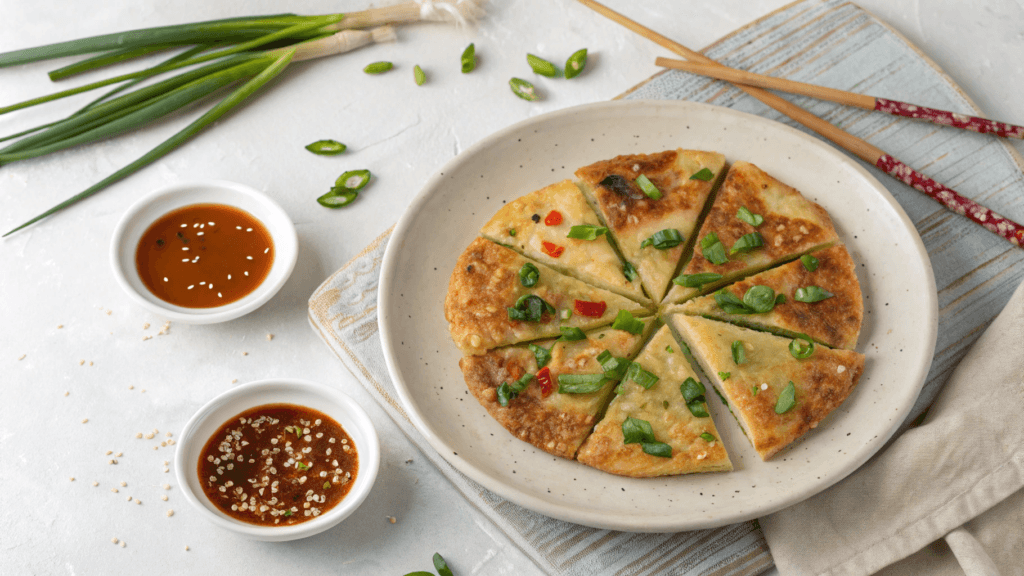
Nutritional Information
Here is the approximate nutritional information for Korean Seafood Pancake per 100g:
| Nutrient | Amount |
| Calories | 150 |
| Protein | 8g |
| Fat | 7g |
| Carbohydrates | 14g |
| Fiber | 1g |
| Sodium | 300mg |
Notes:
- Nutritional values are estimates and can vary based on specific ingredients and cooking methods.
X. Conclusion
Making delicious Korean seafood pancakes at home is easier than you think with these 7 secrets. You can create a restaurant-quality dish with a crispy texture and flavorful filling by following these tips. So, gather your ingredients, follow the steps, and impress your family and friends with your culinary skills! Experiment with different seafood and vegetable combinations to create your own unique variations. Therefore, there are many options for you to try.
Share your creations with us on social media using #KoreanPancakePerfection!
FAQ Section:
Q: What are some Korean seafood pancake recipes?
A: There are countless variations, but a classic recipe includes a batter of flour, water, and egg, mixed with green onions and a variety of seafood like shrimp, squid, and mussels. This article provides a comprehensive recipe with detailed instructions.
Q: What is Korean seafood pancake mix (Buchim Garu)?
A: “Buchim Garu” is a pre-mixed blend of flours and seasonings specifically designed for making Korean pancakes. It typically contains wheat flour, rice flour, and spices, creating a crispy texture. Using it simplifies the cooking process.
Q: What is a typical Korean seafood pancake sauce (dipping sauce)?
A: The most common dipping sauce consists of soy sauce, rice vinegar, sesame oil, gochugaru (Korean chili flakes), and chopped green onions. It’s a flavorful combination of salty, tangy, spicy, and savory. This article includes a classic recipe and suggestions for variations.
Q: How many calories are there in a Korean seafood pancake?
A: A 100g serving of Korean seafood pancake contains roughly 150 calories. However, the exact number can vary depending on the ingredients and the amount of oil used for cooking.
Q: Where can I find Korean seafood pancake near me?
A: Korean restaurants and some Asian fusion restaurants often serve seafood pancakes. Search online for “Korean restaurants near me” to find nearby options.
Q: What is a good Haemul Pajeon recipe?
A: This article offers a detailed Haemul Pajeon recipe with step-by-step instructions and tips for achieving the perfect crispy texture and flavor. It covers everything from batter preparation to cooking techniques.
Q: What is a Korean pancake?
A: A Korean pancake, also known as “jeon,” is a savory pancake made with a batter of flour and water, combined with various ingredients like vegetables, seafood, or meat. It’s typically pan-fried until crispy and served with a dipping sauce.
Q: What are some good Korean pancake sauce options?
A: While the classic soy sauce-based dipping sauce is the most popular, you can also try gochujang-based sauces, wasabi mayo, or sweet chili sauce for different flavor profiles.
Cooking is an act of love and creativity! 🌟 What do you think of this recipe? I’d love to hear your thoughts and any tips or tweaks you’d suggest to make it even better. Let’s inspire each other in the kitchen!
There are no reviews yet. Be the first one to write one.

